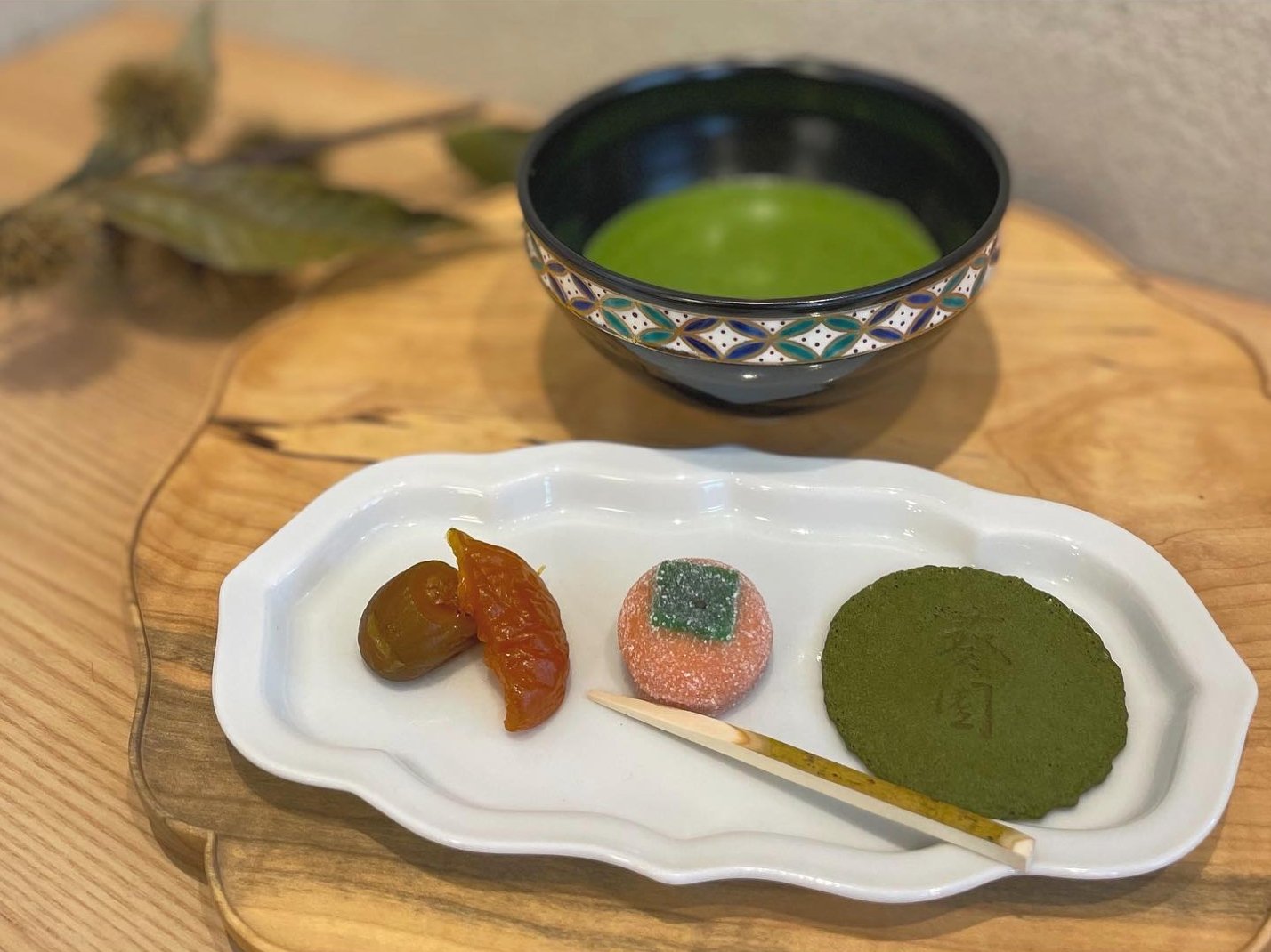おはよう!元気ですか?もう10月も終わりだなんて信じられますか?気温が下がり、木々が色づき、落ち葉が舞い踊るこの季節、ゆったりとくつろぎ、温かいお茶を飲みながら、深呼吸をするのが本当に素敵な季節ですね…

10月31日といえば、お菓子やいたずら、仮装を楽しむアメリカの祝日、ハロウィンを思い浮かべる方も多いかもしれませんが、実は秋分と冬至のちょうど中間点にあたる日です。この天文上の祝日は、世界中で様々な形で祝われています。日本では、10月31日は「日本茶の日」として祝われます。
伝説によると、この日、高僧栄西が中国から初めて茶の種を日本に持ち帰ったと言われています。当時の茶は非常に苦く、薬用や眠気覚まし(例えば、瞑想修行中)に用いられていました。栽培方法と使用法を記した日本最古の茶に関する書物『喫茶養生記』(日本語: 『喫茶養生記』)も栄西によって著され、茶の歴史に関する重要な文献となっています。当時の僧侶や貴族は、粉末にした茶葉と熱湯を混ぜて茶を淹れていました。これは、同時代の中国宋王朝に似ています。このような淹れ方と、その洗練され、集中的な文化こそが、日本茶、特に日本の碾茶のルーツであると考えられます。数世紀を経て、茶はより広く普及し、武士の間で、そして後に庶民の間でも茶の文化と淹れ方が発展しました。
日本茶の記念日
さらに調べてみると、様々な機関が様々な種類の日本茶を広めるために「お茶の日」を企画しているようです。いくつか例を挙げてみましょう。
2月6日は「抹茶の日」です。愛知県西尾市は高品質な抹茶の産地として知られています。西尾茶業協同組合は、西尾茶の120周年を記念して1992年にこの日を制定しました。この日が選ばれたのは、「2」と「6」を合わせると「風呂」と発音し、お風呂の雰囲気を連想させるからです。しかし、日本の茶道では、この「風呂」は茶室で湯を沸かすための炉床を指します。
 写真はAOI-Seichaさんより。
写真はAOI-Seichaさんより。
緑茶の日は5月1日または2日で、春の茶の季節の始まりを告げる伝統的な日で、新茶の初摘みが行われます。立春から88日目にあたります。この日が正式に認められたのは1990年ですが、伝統的な茶摘み歌から、八十八夜の到来を祝う習慣はもっと古い歴史を持つことがわかります。
6月1日の「麦茶の日」は、ちょうど大麦の収穫シーズンの始まりと重なります。新鮮な大麦と新茶で淹れた麦茶に勝るものはないので、まさにうってつけです。「麦茶の日」は1986年に初めて公式に制定されました。
玄米茶の日は11 月 1 日です。これもまた、その日が米穀年度 (日本語:米穀年度; 米穀年(べいこくねん)は、日本で米が取引される年です。
実は、10月1日にはもう一つ「日本茶の日」があることをご存知の方もいるかもしれません。これは、藩主が 豊臣秀吉は1587年、京都の北野天満宮で「大北野茶会」と呼ばれる有名な茶会を催しました。この茶会が重要な意味を持ったのは、誰もが参加できる場であったことです。つまり、大名や貴族、茶人だけに限定されず、茶道に情熱を抱く者であれば、庶民や外国人も参加することができたのです。この茶会を機に、身分を問わず誰もが高尚な茶文化に触れることができるようになったことから、この日は「茶の日」としても知られています。
なぜ日本茶の日(両方とも!)が秋なのか不思議に思うかもしれません。「新茶」といえば、収穫時期は4月から5月なので、春にこのような祝日を祝う方が理にかなっているように思えるからです。しかし、昔は秋こそが新茶を楽しむ時期でした。これは、当時のお茶は初夏に収穫されていたためです。その後、壺(お茶を保存するための比較的大きな壺)に入れて、秋まで低温で保存されていました。今日でも、秋新茶または熟成新茶(日本語:熟成新茶)と呼ばれるこの種のお茶を見かけることがあります。
摘みたての新茶は、みずみずしく若草のような香りがしますが、熟成させることで青臭さが抜け、芳醇でまろやかな味わいに変化します。徳川家康は特にこのお茶を好んだと言われています。もし、このような「ヴィンテージ」の新茶を見かけたら、あの有名な武将たちが愛した秋の新茶だったことを思い出してください。
そうですね、お祝いしたり、日本茶を味わう記念日はたくさんあると思います。これから寒く暗い冬へと移り変わっていきますが、この特別な日に、心温まる一杯の日本茶をゆっくりとお楽しみいただければ幸いです。

ハロウィンと日本茶を両方お祝いしてみませんか? フランスのハロウィンスイーツ(パンナコッタの目玉とカボチャと栗のふわふわスイーツ)と、上島さんの3年番茶を組み合わせました。見た目は不気味なクマ!
愛知県西尾市の葵製茶による画像です。
この記事は2023年10月31日に更新されました。


